 Facebook
Facebook
 X
X
 Instagram
Instagram
 TikTok
TikTok
 Youtube
Youtube
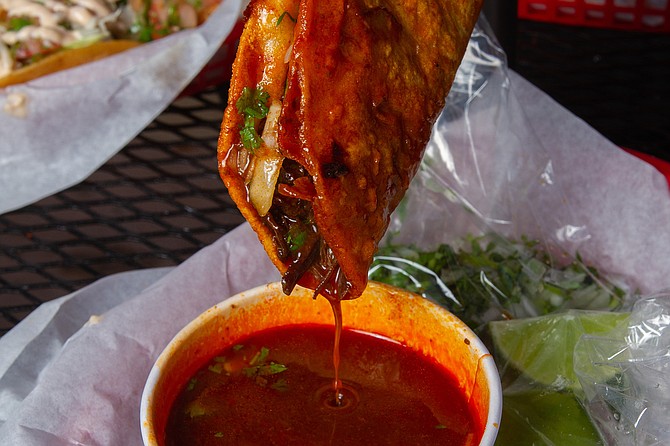
It’s just after noon on a Thursday at Escondido’s TJ Tacos. The place is surprisingly uncrowded, with only about six people in line for the taco stand’s signature adobada tacos, a spicy blend of marinated pork topped with chopped cilantro and onions and a delectable creamy green avocado sauce. Three are a meal, and at $2.80 a pop, your lunch (or dinner) won’t even begin to break the bank.
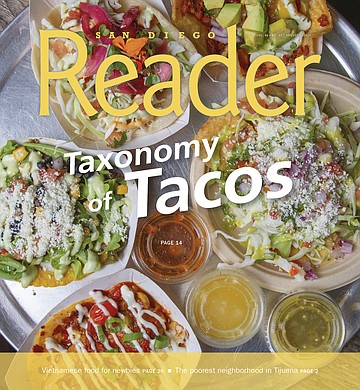
TJ – short for “Tijuana” - is an authentic Mexican taco stand, or taqueria, which may explain why the clientele is largely Latino. And just like the celebrated Tijuana taquerias that have been around for decades, customers need to stand in line for the taco of their choice – one line for adobada, another for carne asada, and a third for all others, including lengua, or beef tongue; cabeza, or beef head; tripa (tripe); suadero (beef shoulder); and nopal (cactus). A fourth line is for burritos and fries, but you hardly ever see anyone in that one. The counter fronts an open kitchen where you can watch your food being cooked – even your tortillas, handmade from masa by prim, expressionless women wearing hairnets.
The counter runs the width of one end of the building. Once you get your food, you veer left to a second counter, perpendicular to and shorter than the first, where you pay. The rest of the rectangular interior is filled with tables and chairs and a large cart with sliced radishes on one end and quartered limes on the other.
Friday, same time, City Tacos in Pacific Beach. It’s a small storefront less than a block from the sand, near the foot of Crystal Pier, outfitted with a tiny sidewalk patio just big enough for a cluster of small tables under two umbrellas. Two girls who appear to be in their late teens, both in bikini tops and board shorts, order a pair of carne asada tacos each, along with two diet Cokes. They take their trays to the sidewalk patio and immediately begin chatting up two teen boys with skateboards, who a few seconds later get in line for tacos as well.
Just in front of the boys are three older men, one wearing a Maui T-shirt and one, with thinning red hair, who could pass for a cop. They scrutinize the menu and opt for more eclectic fare, including a couple of Mexicali tacos, with grilled arrachera (skirt steak), onions and poblano peppers over melted asadero cheese and mashed potatoes; a Pescado, consisting of fried mahi-mahi with cabbage, pickled red onions, habanero, and strawberries; and Chile Relleno, with beer-battered chile guero filled with Oaxaca and cotija cheese and topped with tomato, onion, cilantro and a lime aioli. Two of them spend their entire lunch on their iPhones, while the third looks over toward the patio.
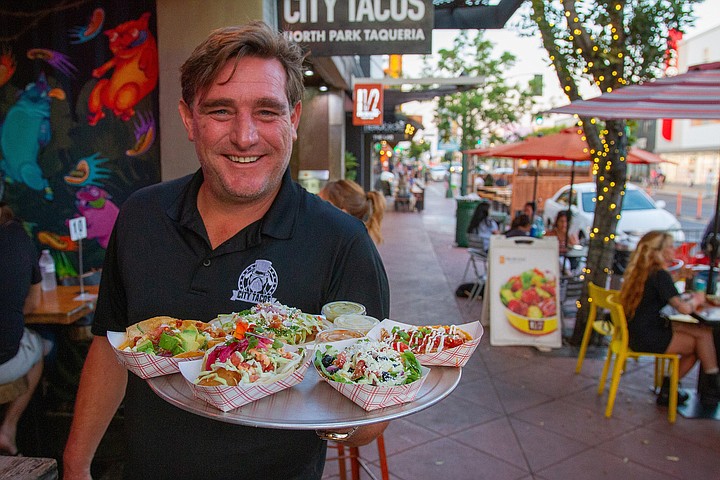
San Diego’s love affair with the taco is nothing new. But over the last few years, there’s been a definite surge in dedicated taco shops serving street tacos — smaller than the tacos you generally get at sit-down restaurants, and cheaper as well. For a regular meal, you need three, maybe four, maybe even five, which encourages you to mix varieties and sample different flavors. Some of these taco shops, like TJ Tacos, are traditional, and try to replicate the street taco experience you would get south of the border at little walk-up taco stands or even street-corner taco carts. Various types, cuts, and preparations of meat — beef, pork, chicken — sizzle on the grill or roast on a spit right in front of you. Clouds of fragrant smoke hover over the taco “chef,” or taquero, as he slices, dices or pulls the meat and tucks it into a warm tortilla. Other taco shops, like City Tacos, are more gourmet, fusing ingredients and flavors taken from throughout Mexico.
“There’s been a definite explosion in the number of taco shops here in San Diego,” said Gerald Torres, owner of City Tacos, which currently has seven locations throughout San Diego County. He estimates the total has easily doubled over the last five years. Justin Jachura, co-owner of three Los Tacos stands, thinks that’s a conservative count. “There are thousands – there have to be.”
Over the last seven or so years, he says, the total number of taco shops in San Diego has gone up by a factor of 10. And Paulina Porter, one of the organizers of the annual Taco Fest, which after a pandemic-year absence returns to the Waterfront Park at the County Administration Building this coming October, says, “There’s no shortage of taco shops. I always trip out when I meet with a new person saying they’re looking into opening up a taco shop. I say, ‘Really?’ – as though there are not enough?” By Porter’s estimates, there are twenty-five percent more taco shops this year than before the pandemic. “There’s one on every corner, it seems,” she says.
Putting exact numbers on the population, and growth, of taco shops is difficult, partly because the definition of a taco shop is so fluid. Many of the perennially popular “taco shops,” like the various ‘Berto’s, Cotijas and Vallarta Express, offer a wide range of other Mexican fast foods and tend to be more “burrito forward,” as Los Tacos’ Jachura puts it. Compounding this is the fact that some of the best tacos can be found at sit-down Mexican restaurants like Casa de Bandini or at walk-up Barrio Logan joints like Las Cuatro Milpas, a block west of Chicano Park, which has been drawing lines for its home-made tortillas and tamales since 1933. About the only thing one can say with certainty is that if you’re craving a taco, a really, really good taco, you’re not going to have to look far.
Tacos have always been a staple of Mexican restaurants, and lately have become so popular that there’s even a documentary series on Netflix called The Taco Chronicles, about the culture and history behind the wide variety of street tacos found in different parts of Mexico. Here in San Diego, situated so close to the border, the taco has become a key part of our culinary history. Even Jack in the Box, the homegrown burger chain, introduced tacos to its menu back in the 1950s as way to differentiate itself from McDonald’s, Burger King, and Carl’s Jr. Tacos quickly became the No. 1 selling item on the Jack in the Box menu (and, according to a 2017 Wall Street Journal article, have remained so). Two Southern California fast-food chains launched not long after: Taco Bell, in Downey, in 1962; and Del Taco, in the Mojave high-desert town of Yermo, in 1964. Both worked their way into San Diego, with Taco Bell audaciously opening one of its first locations in the heart of Old Town.
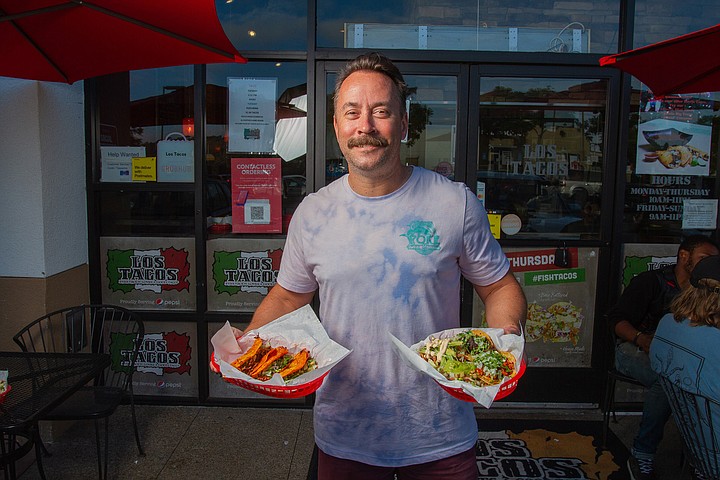
The ’70s saw the arrival of Roberto’s, a taco stand easily identified by its red-and-yellow striped exterior walls. Roberto Robledo, who came to San Diego from the Mexican state of San Luis Potosi in 1957 through the bracero program, opened a tortilla stand in San Ysidro in 1964 and his first branded Roberto’s Taco Shop in 1971. Over the years, he opened more and more taco shops, bringing over family and friends from Mexico to work in them,; and in 1979 he allowed a nephew, Alvaro Rodriguez, to open up his own Roberto’s. The relationship soon soured, and Rodriguez was ordered by the courts to change his restaurant’s name. “I only had two dollars to buy paint, so I just made the ‘R’ an ‘A’ and the ‘O’ an ‘L,’ to save money,” he told the Reader in May 1983. Soon, there were more Alberto’s than Roberto’s. And eventually, others got in the game: by 1989, according to a Reader story, there were more than 15 variants, including Aliberto’s, Adalberto’s and Filiberto’s.
In the meantime, an entrepreneur named Ralph Rubio had introduced a new concept to San Diego: fish tacos, based on the tacos he and some buddies from San Diego State University encountered while on spring break in San Felipe. The first Rubio’s opened in 1983 in a former Orange Julius location on East Mission Bay Drive; the venture soon grew into dozens of locations throughout the county.
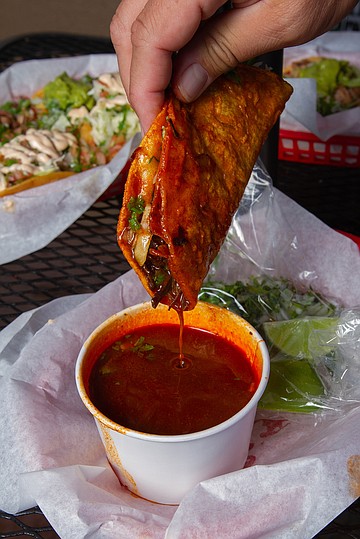
But the taco-centric stands that have been proliferating in recent years are part of an overall trend toward broader culinary choices — and much more creativity and experimentation — in San Diego’s dining scene. “The art of the food is the thing now,” says Taco Fest’s Porter. “Chefs have finally gotten the recognition that they’ve been looking for – thanks to TV, you can get that celebrity status from being a chef, so they’re being more creative. And I think with a taco, the profit margins are probably great, because there’s not too much to it. They’re easy, they’re fast, and in San Diego, tacos have always been a must, a staple. Everyone has tacos on the menu. And people are getting more creative in what they eat, because they can. Before, you used to go to a taco show and they’d slap some meat on a tortilla and be done. Now, it’s like you can put just about anything on a tortilla. Look at City Tacos – they even have tacos with almonds and dried raisins, and you know what? They’re great. Everything is fusion now, and not just with tacos. It’s become an art.”
Over the last few years, says City Tacos’ Torres, “there’s been a significant change in the perception of, and the market for, Mexican food here in San Diego. When we opened our first City Tacos in North Park in May 2014, the term “taqueria” was unheard of. Even putting it on Google Search, it just wasn’t there. There were taco shops with a lot of different things on the menu, and they paved the way for Mexican cuisine in San Diego. I’m from Mexico City, my chef’s from Mexico City, and we always wanted to do something a little better, a little different, that would change the perception of Mexican food. You can put the world in a tortilla and it would still be a taco. That’s how we enjoy tacos in Mexico City. It’s basically a tortilla with a meal – you serve it in a tortilla and it becomes a taco.”
He cites Chiles en Nogada, “one of the most famous dishes in Mexico,” consisting of poblano chiles stuffed with picadillo topped with a walnut-based cream sauce, pomegranate seeds, and parsley. “In Mexico, it’s made in September to celebrate Independence Day, and the ingredients and their colors represent the Mexican flag,” Torres says. “We make it here, too, only we turn it into a taco and sell it as a special menu item in September and October. It’s exactly the same dish, just presented in a taco format.”
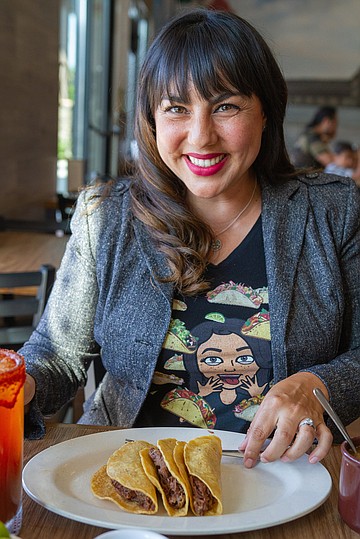
The word “taco,” according to a 2012 article in The Smithsonian, is believed to date back to the eighteenth-century silver mines in Mexico. Jeffrey M. Pilcher, a professor of history at the University of Minnesota, told the magazine that “taco” referred to charges the miners would use to excavate the ore, consisting of paper wrapped around gunpowder. “When you think about it, a chicken taquito with a good hot sauce is really a lot like a stick of dynamite,” he said. “The first references [to the taco] in any sort of archive or dictionary come from the end of the nineteenth century. And one of the first types of tacos described is called tacos de minero — miner’s tacos. So the taco is not necessarily this age-old cultural expression; it’s not a food that goes back to time immemorial.”
Taquerias originated in the working-class neighborhoods of Mexico, with taco stands grilling, roasting and boiling all sorts of different meats and serving them in tortillas. Industrialization brought migration to the United States, and tacos came with the migrants who worked the mines and the railroads.
The granddaddy of the current wave of taco shops, many of which have opened over the last five or six years, is Tacos El Gordo de Tijuana B.C., a family-owned and –operated restaurant chain based in Tijuana and established in 1972. The company opened its first San Diego restaurant in 1998, and has since opened two more in Chula Vista, as well as three in Las Vegas. After more than twenty years in business north of the border, Tacos El Gordo has quite a big fan base; on Instagram, the taqueria has nearly 54,000 followers, more than any other San Diego taco chain. In keeping with tradition, customers of Tacos El Gordo have to stand in line for a specific taco. Invariably, the two longest lines are for the adobada and carne asada tacos, says Delia Hernandez, who works for the owner, who does not speak English. “They are very flavorful and excellent quality,” she says. “We provide handmade corn tortillas and top-grade meats, and our salsas and guacamole are made from scratch daily. One of our goals is for the customers to enjoy authentic Tijuana tacos by using the freshest ingredients.”
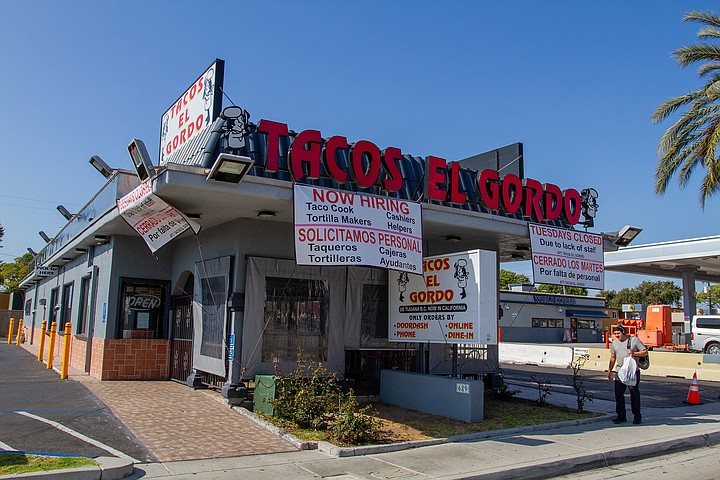
TJ Tacos in Escondido is a lot like Tacos El Gordo, a similarity that caused it some problems shortly after it opened in January 2016. In April of that year, the owners of Tacos El Gordo sued the newcomer, accusing TJ of stealing trade secrets. Sabah Sluuia Hanna, the owner of TJ Tacos, worked for Tacos El Gordo for six years, rising to a manager position before quitting in 2012, according to the Superior Court complaint, Courthouse News reported at the time. Less than six months later, Hanna incorporated TJ Tacos and subsequently hired former assistant chef Hector Roman Vazquez to join the Escondido taco stand, according to the complaint.
In its complaint, Tacos El Gordo accused Hanna and Vazquez of competing unfairly “by palming off products, efforts, [and] trade secrets of Tacos El Gordo as their own,” violating trademark and interfering with its business, according to the Courthouse News story. The suit claimed the two knew secret food recipes, suppliers and distributors. Tacos El Gordo sought damages and exemplary damages for misappropriation of trade secrets, breach of fiduciary duty, unfair competition, and intentional and negligent interference with prospective economic advantage. But the suit was dismissed without prejudice just three months after it was filed, attorney Raymond Contreras of Chula Vista, who represents Tacos El Gordo, told the Reader. Repeated calls to Amir Hanna, Sabah Hanna’s son, were not returned.
On his LinkedIn profile, City Tacos’ Gerald Torres refers to himself as a “Taco Artist.” At last count, he says, he and his team have come up with about 100 different tacos, some of which are seasonal, such as the Flor de Calabaza taco, a periodic “taco of the month.” The Flor de Calabaza taco consists of golden fried squash blossoms over a bed of melted asadero cheese, baby portabella mushrooms and poblano peppers topped with tomato, cilantro, micro greens and serrano aioli. Torres insists his tacos are every bit as authentic as those sold at traditional Tijuana-style taquerias such as Tacos El Gordo and TJ Tacos. “We look at the taco as something that is exciting, that excites your palate,” he says. “When we search for tacos in Mexico, we search for the best tacos, period – whether it’s steak with bone marrow or you go to this place in Yucatan where they do these salsa mousses, and use all these crazy, beautiful ingredients. That is what food is about. I don’t think I make American-style tacos or Mexican-style tacos. I make tacos that taste good. And our ingredients are one hundred percent traditional. Our masa is made in house, and our carnitas is made Mexican-style — and part of the secret recipe is Coca-Cola.”
Ken Kaufman, a 55-year entrepreneur from La Costa, is a big fan of City Tacos. “I used to always go to The Taco Stand in Encinitas, where everyone is always waiting in line,” he says. “That’s more of a traditional taco shop. But then one day, I was on one of my walks and City Tacos opened up and I said, ‘Oh my God, this is gourmet – this is a lot healthier, and the quality of the ingredients….’ It’s kind of like a Zagat taco place.” Kaufman continues to frequent traditional taco shops such as Juanita’s Encinitas, he says: “They’ve got great carnitas, great pollo asada, but it’s a different experience. When you go to those types of places, you’re just eating food, and large quantities of food. But when you go to City Tacos, there’s this explosion of taste and flavors – it’s just beautiful.” His favorites? “Hard to say. Their fish taco is really good, the Pescado. If you want them to grill it, they’ll grill it. You can’t go to Juanita’s and ask for a grilled fish taco. They have a really good surf and surf taco, too, but to be honest, anything on the menu I’m fine with.”
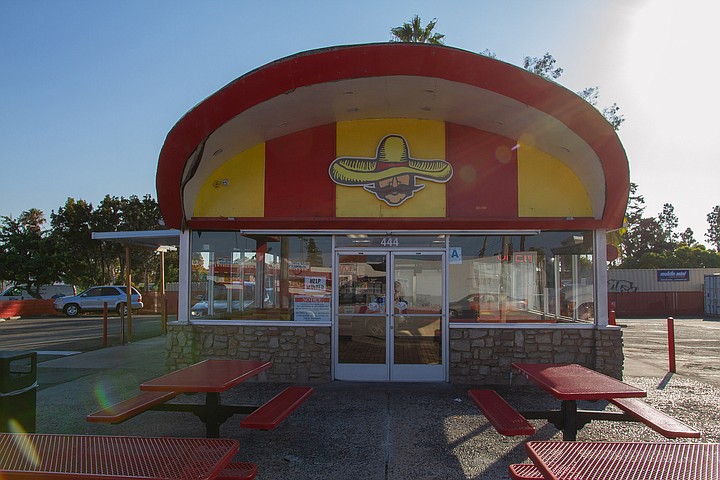
Tim Mays, founder of the Casbah, says he has several “go-to favorites,” including Tacos El Gordo. “It’s kind of intimidating to do if you don’t speak Spanish very well,” he says. “You have to stand in different lines for each type of taco, and there are no signs telling you where to line up, so you just stand around and try to figure it out. But the food is amazing.” For fish tacos, Mays swears by TJ Oyster Bar, near his home in Bonita. “They’ve got amazing seafood tacos,” he says.
“I also like City Tacos a lot,” adds Mays. “People around here think traditional Mexican tacos have to be Roberto’s style, with carne asada, pollo or adobada, but if you go further south into Mexico, you’ll find a much greater variety. I’ve been going to Salud in Barrio Logan since they opened about five years ago, where they’ve got a really killer breakfast taco with a sunny-side-up egg, chorizo, bacon, avocado and cotija cheese. It’s just incredible, and all their other tacos are great, too. And then there’s a new place we’ve been to in Bonita called Taqueria Revolucion, in a little strip mall, and they serve a queso birria (a meat stew that originated in the Mexican state of Jalisco), carnitas, pollos, and adobada.”
Paulina Porter also has her favorites. “If I want great, traditional street tacos, I’ll go to Salud or Tacos El Poblano [in Chula Vista],” she says. “If I’m looking for gourmet, I’ll do City Tacos. By now, I know their entire menu. Tuetano Taqueria, down in San Ysidro, is known for their bone marrow tacos. If you’re looking for barbacoa, Aqui es Texcoco in Chula Vista serves traditional Mexican-style lamb barbecue. And Taco El Gordo – now that’s a true taqueria. They’ve stayed true to how you order in Tijuana, with all these different types of tacos and you have to stand in line for each. They are keeping true to tradition, which I don’t think works here. Over here, people don’t have the patience to stand in line for one taco, and then stand in another line for another taco. Here, they want to eat everything all at once – but I do love their tacos.”
Porter expects more taco stands to open in the future, often from mom-and-pop teams transitioning from food trucks. “I think they’re going to keep popping up,” she says.
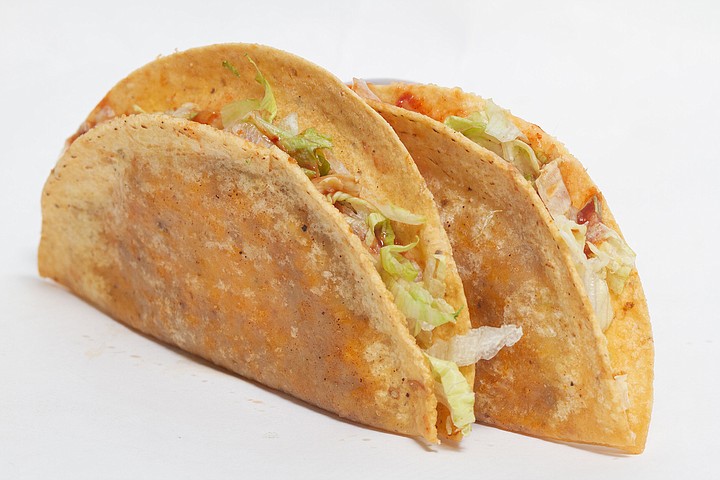
City Tacos’ Gerald Torres, for one, is already eyeing expansion. Most recently, he opened his seventh location at 323 Seventh Avenue, on the ground floor of The Legend Condominiums, near Petco Park. The shop was supposed to open in the spring of 2020, but the opening was delayed by the pandemic to May 2021. “My dream is to make it all the way up to San Francisco,” says Torres, who owned and operated an Italian restaurant for more than a decade before starting City Tacos. “I love the coast, I love the beach towns, and each one would do well with City Tacos.”
Tacos El Gordo also wants to expand – but has thus far been stymied by a lack of qualified taqueros and other help, even at a pay rate of twenty dollars an hour. “We have been trying to open a new location in downtown San Diego, on F Street, but we have been struggling to get employees,” Delia Hernandez says. “We don’t have enough working hands to open the location yet.”
Justin Jachura of Los Tacos admits he didn’t start the trend toward street tacos, but he sure accelerated it. “Street tacos are a part of Mexican culture,” Jachura says. “We got the idea from going across the border into Tijuana, where taco stands are everywhere, and then when you cross the border there was no place to get them other than Tacos El Gordo and Tacos El Paisa. Everyone else was burrito-forward, based on the model built by Roberto’s.” (Like Tacos El Gordo, Tacos El Paisa for years operated several Tijuana taco stands before coming to San Diego in 1999, on the corner of 47th Street and Logan Avenue in the Lincoln Park neighborhood.) Jachura and his partners opened the first of three Los Tacos locations in Oceanside, where State Route 78 meets Jefferson Street on the city’s southern border with Carlsbad, in June 2005. They have since opened two more, one in Temecula and another in Carlsbad, and they also own and operate two sit-down Senor Grubby’s restaurants in Carlsbad and Oceanside, as well as a poke bowl place in the Shoppes at Carlsbad mall.
Jachura prides himself on his food’s authenticity. “We serve authentic street tacos like the ones you can get in Mexico. We even built our restaurants to resemble a Tijuana taco stand, with an exposed kitchen so you can see us cooking the al pastor on a vertical spit or charbroiling the chicken. Everything happens right in front of you. We hired a real taquero, or taco chef, from Mexico City and another one from Oaxaca, hired a butcher to teach us how to cut the meat, and we still do everything in-house.” Los Tacos’ biggest seller is carne asada, followed by al pastor. “Those are our big dogs,” Jachura says. Los Tacos also offers traditional carnitas and chicken tacos, and occasionally tripe and tongue. But despite his focus on authenticity, Jachura admits to dabbling in fusion, offering duck tacos and even pork belly tacos — though he maintains the latter was purely accidental. “We were going to open another restaurant, a smokehouse, and got a great deal on a smoker,” he says. “We were going to smoke our own meat, but things didn’t work out, so we figured out a way to put it to use at Los Tacos.”
Jachura doesn’t think much of the more exotic tacos available at some of the newer taco stands around town, including one in Carlsbad that’s less than a mile from Grubby’s. “We call them ‘culture vultures,’” he says. “Our tacos are the real shit, not the bull shit. Our carnitas is cooked in lard. The whole thing is, we’re not trying to be something we’re not, and our customers know this – that’s why seventy percent of our regulars are Latinos. There are people, corporate suits with money, taking an authentic culture, an authentic cuisine, and trying to profit from it. They don’t care about culture; they just want to make money.”
Jachura says he is always looking for new restaurant opportunities, but unlike City Tacos’ Gerald Torres, he insists there are no more taco stands in his future. “The market is completely saturated,” he maintains. “It’s like frozen yogurt in the ‘90s, when all of a sudden you had a fro-yo place on every corner. Now, with taco shops, it’s the same. When we started we wanted to create something there’s a need for, and we didn’t see anyone else doing it. Now, everyone’s doing it – everyone wants a piece.”


It’s just after noon on a Thursday at Escondido’s TJ Tacos. The place is surprisingly uncrowded, with only about six people in line for the taco stand’s signature adobada tacos, a spicy blend of marinated pork topped with chopped cilantro and onions and a delectable creamy green avocado sauce. Three are a meal, and at $2.80 a pop, your lunch (or dinner) won’t even begin to break the bank.

TJ – short for “Tijuana” - is an authentic Mexican taco stand, or taqueria, which may explain why the clientele is largely Latino. And just like the celebrated Tijuana taquerias that have been around for decades, customers need to stand in line for the taco of their choice – one line for adobada, another for carne asada, and a third for all others, including lengua, or beef tongue; cabeza, or beef head; tripa (tripe); suadero (beef shoulder); and nopal (cactus). A fourth line is for burritos and fries, but you hardly ever see anyone in that one. The counter fronts an open kitchen where you can watch your food being cooked – even your tortillas, handmade from masa by prim, expressionless women wearing hairnets.
The counter runs the width of one end of the building. Once you get your food, you veer left to a second counter, perpendicular to and shorter than the first, where you pay. The rest of the rectangular interior is filled with tables and chairs and a large cart with sliced radishes on one end and quartered limes on the other.
Friday, same time, City Tacos in Pacific Beach. It’s a small storefront less than a block from the sand, near the foot of Crystal Pier, outfitted with a tiny sidewalk patio just big enough for a cluster of small tables under two umbrellas. Two girls who appear to be in their late teens, both in bikini tops and board shorts, order a pair of carne asada tacos each, along with two diet Cokes. They take their trays to the sidewalk patio and immediately begin chatting up two teen boys with skateboards, who a few seconds later get in line for tacos as well.
Just in front of the boys are three older men, one wearing a Maui T-shirt and one, with thinning red hair, who could pass for a cop. They scrutinize the menu and opt for more eclectic fare, including a couple of Mexicali tacos, with grilled arrachera (skirt steak), onions and poblano peppers over melted asadero cheese and mashed potatoes; a Pescado, consisting of fried mahi-mahi with cabbage, pickled red onions, habanero, and strawberries; and Chile Relleno, with beer-battered chile guero filled with Oaxaca and cotija cheese and topped with tomato, onion, cilantro and a lime aioli. Two of them spend their entire lunch on their iPhones, while the third looks over toward the patio.

San Diego’s love affair with the taco is nothing new. But over the last few years, there’s been a definite surge in dedicated taco shops serving street tacos — smaller than the tacos you generally get at sit-down restaurants, and cheaper as well. For a regular meal, you need three, maybe four, maybe even five, which encourages you to mix varieties and sample different flavors. Some of these taco shops, like TJ Tacos, are traditional, and try to replicate the street taco experience you would get south of the border at little walk-up taco stands or even street-corner taco carts. Various types, cuts, and preparations of meat — beef, pork, chicken — sizzle on the grill or roast on a spit right in front of you. Clouds of fragrant smoke hover over the taco “chef,” or taquero, as he slices, dices or pulls the meat and tucks it into a warm tortilla. Other taco shops, like City Tacos, are more gourmet, fusing ingredients and flavors taken from throughout Mexico.
“There’s been a definite explosion in the number of taco shops here in San Diego,” said Gerald Torres, owner of City Tacos, which currently has seven locations throughout San Diego County. He estimates the total has easily doubled over the last five years. Justin Jachura, co-owner of three Los Tacos stands, thinks that’s a conservative count. “There are thousands – there have to be.”
Over the last seven or so years, he says, the total number of taco shops in San Diego has gone up by a factor of 10. And Paulina Porter, one of the organizers of the annual Taco Fest, which after a pandemic-year absence returns to the Waterfront Park at the County Administration Building this coming October, says, “There’s no shortage of taco shops. I always trip out when I meet with a new person saying they’re looking into opening up a taco shop. I say, ‘Really?’ – as though there are not enough?” By Porter’s estimates, there are twenty-five percent more taco shops this year than before the pandemic. “There’s one on every corner, it seems,” she says.
Putting exact numbers on the population, and growth, of taco shops is difficult, partly because the definition of a taco shop is so fluid. Many of the perennially popular “taco shops,” like the various ‘Berto’s, Cotijas and Vallarta Express, offer a wide range of other Mexican fast foods and tend to be more “burrito forward,” as Los Tacos’ Jachura puts it. Compounding this is the fact that some of the best tacos can be found at sit-down Mexican restaurants like Casa de Bandini or at walk-up Barrio Logan joints like Las Cuatro Milpas, a block west of Chicano Park, which has been drawing lines for its home-made tortillas and tamales since 1933. About the only thing one can say with certainty is that if you’re craving a taco, a really, really good taco, you’re not going to have to look far.
Tacos have always been a staple of Mexican restaurants, and lately have become so popular that there’s even a documentary series on Netflix called The Taco Chronicles, about the culture and history behind the wide variety of street tacos found in different parts of Mexico. Here in San Diego, situated so close to the border, the taco has become a key part of our culinary history. Even Jack in the Box, the homegrown burger chain, introduced tacos to its menu back in the 1950s as way to differentiate itself from McDonald’s, Burger King, and Carl’s Jr. Tacos quickly became the No. 1 selling item on the Jack in the Box menu (and, according to a 2017 Wall Street Journal article, have remained so). Two Southern California fast-food chains launched not long after: Taco Bell, in Downey, in 1962; and Del Taco, in the Mojave high-desert town of Yermo, in 1964. Both worked their way into San Diego, with Taco Bell audaciously opening one of its first locations in the heart of Old Town.

The ’70s saw the arrival of Roberto’s, a taco stand easily identified by its red-and-yellow striped exterior walls. Roberto Robledo, who came to San Diego from the Mexican state of San Luis Potosi in 1957 through the bracero program, opened a tortilla stand in San Ysidro in 1964 and his first branded Roberto’s Taco Shop in 1971. Over the years, he opened more and more taco shops, bringing over family and friends from Mexico to work in them,; and in 1979 he allowed a nephew, Alvaro Rodriguez, to open up his own Roberto’s. The relationship soon soured, and Rodriguez was ordered by the courts to change his restaurant’s name. “I only had two dollars to buy paint, so I just made the ‘R’ an ‘A’ and the ‘O’ an ‘L,’ to save money,” he told the Reader in May 1983. Soon, there were more Alberto’s than Roberto’s. And eventually, others got in the game: by 1989, according to a Reader story, there were more than 15 variants, including Aliberto’s, Adalberto’s and Filiberto’s.
In the meantime, an entrepreneur named Ralph Rubio had introduced a new concept to San Diego: fish tacos, based on the tacos he and some buddies from San Diego State University encountered while on spring break in San Felipe. The first Rubio’s opened in 1983 in a former Orange Julius location on East Mission Bay Drive; the venture soon grew into dozens of locations throughout the county.

But the taco-centric stands that have been proliferating in recent years are part of an overall trend toward broader culinary choices — and much more creativity and experimentation — in San Diego’s dining scene. “The art of the food is the thing now,” says Taco Fest’s Porter. “Chefs have finally gotten the recognition that they’ve been looking for – thanks to TV, you can get that celebrity status from being a chef, so they’re being more creative. And I think with a taco, the profit margins are probably great, because there’s not too much to it. They’re easy, they’re fast, and in San Diego, tacos have always been a must, a staple. Everyone has tacos on the menu. And people are getting more creative in what they eat, because they can. Before, you used to go to a taco show and they’d slap some meat on a tortilla and be done. Now, it’s like you can put just about anything on a tortilla. Look at City Tacos – they even have tacos with almonds and dried raisins, and you know what? They’re great. Everything is fusion now, and not just with tacos. It’s become an art.”
Over the last few years, says City Tacos’ Torres, “there’s been a significant change in the perception of, and the market for, Mexican food here in San Diego. When we opened our first City Tacos in North Park in May 2014, the term “taqueria” was unheard of. Even putting it on Google Search, it just wasn’t there. There were taco shops with a lot of different things on the menu, and they paved the way for Mexican cuisine in San Diego. I’m from Mexico City, my chef’s from Mexico City, and we always wanted to do something a little better, a little different, that would change the perception of Mexican food. You can put the world in a tortilla and it would still be a taco. That’s how we enjoy tacos in Mexico City. It’s basically a tortilla with a meal – you serve it in a tortilla and it becomes a taco.”
He cites Chiles en Nogada, “one of the most famous dishes in Mexico,” consisting of poblano chiles stuffed with picadillo topped with a walnut-based cream sauce, pomegranate seeds, and parsley. “In Mexico, it’s made in September to celebrate Independence Day, and the ingredients and their colors represent the Mexican flag,” Torres says. “We make it here, too, only we turn it into a taco and sell it as a special menu item in September and October. It’s exactly the same dish, just presented in a taco format.”

The word “taco,” according to a 2012 article in The Smithsonian, is believed to date back to the eighteenth-century silver mines in Mexico. Jeffrey M. Pilcher, a professor of history at the University of Minnesota, told the magazine that “taco” referred to charges the miners would use to excavate the ore, consisting of paper wrapped around gunpowder. “When you think about it, a chicken taquito with a good hot sauce is really a lot like a stick of dynamite,” he said. “The first references [to the taco] in any sort of archive or dictionary come from the end of the nineteenth century. And one of the first types of tacos described is called tacos de minero — miner’s tacos. So the taco is not necessarily this age-old cultural expression; it’s not a food that goes back to time immemorial.”
Taquerias originated in the working-class neighborhoods of Mexico, with taco stands grilling, roasting and boiling all sorts of different meats and serving them in tortillas. Industrialization brought migration to the United States, and tacos came with the migrants who worked the mines and the railroads.
The granddaddy of the current wave of taco shops, many of which have opened over the last five or six years, is Tacos El Gordo de Tijuana B.C., a family-owned and –operated restaurant chain based in Tijuana and established in 1972. The company opened its first San Diego restaurant in 1998, and has since opened two more in Chula Vista, as well as three in Las Vegas. After more than twenty years in business north of the border, Tacos El Gordo has quite a big fan base; on Instagram, the taqueria has nearly 54,000 followers, more than any other San Diego taco chain. In keeping with tradition, customers of Tacos El Gordo have to stand in line for a specific taco. Invariably, the two longest lines are for the adobada and carne asada tacos, says Delia Hernandez, who works for the owner, who does not speak English. “They are very flavorful and excellent quality,” she says. “We provide handmade corn tortillas and top-grade meats, and our salsas and guacamole are made from scratch daily. One of our goals is for the customers to enjoy authentic Tijuana tacos by using the freshest ingredients.”

TJ Tacos in Escondido is a lot like Tacos El Gordo, a similarity that caused it some problems shortly after it opened in January 2016. In April of that year, the owners of Tacos El Gordo sued the newcomer, accusing TJ of stealing trade secrets. Sabah Sluuia Hanna, the owner of TJ Tacos, worked for Tacos El Gordo for six years, rising to a manager position before quitting in 2012, according to the Superior Court complaint, Courthouse News reported at the time. Less than six months later, Hanna incorporated TJ Tacos and subsequently hired former assistant chef Hector Roman Vazquez to join the Escondido taco stand, according to the complaint.
In its complaint, Tacos El Gordo accused Hanna and Vazquez of competing unfairly “by palming off products, efforts, [and] trade secrets of Tacos El Gordo as their own,” violating trademark and interfering with its business, according to the Courthouse News story. The suit claimed the two knew secret food recipes, suppliers and distributors. Tacos El Gordo sought damages and exemplary damages for misappropriation of trade secrets, breach of fiduciary duty, unfair competition, and intentional and negligent interference with prospective economic advantage. But the suit was dismissed without prejudice just three months after it was filed, attorney Raymond Contreras of Chula Vista, who represents Tacos El Gordo, told the Reader. Repeated calls to Amir Hanna, Sabah Hanna’s son, were not returned.
On his LinkedIn profile, City Tacos’ Gerald Torres refers to himself as a “Taco Artist.” At last count, he says, he and his team have come up with about 100 different tacos, some of which are seasonal, such as the Flor de Calabaza taco, a periodic “taco of the month.” The Flor de Calabaza taco consists of golden fried squash blossoms over a bed of melted asadero cheese, baby portabella mushrooms and poblano peppers topped with tomato, cilantro, micro greens and serrano aioli. Torres insists his tacos are every bit as authentic as those sold at traditional Tijuana-style taquerias such as Tacos El Gordo and TJ Tacos. “We look at the taco as something that is exciting, that excites your palate,” he says. “When we search for tacos in Mexico, we search for the best tacos, period – whether it’s steak with bone marrow or you go to this place in Yucatan where they do these salsa mousses, and use all these crazy, beautiful ingredients. That is what food is about. I don’t think I make American-style tacos or Mexican-style tacos. I make tacos that taste good. And our ingredients are one hundred percent traditional. Our masa is made in house, and our carnitas is made Mexican-style — and part of the secret recipe is Coca-Cola.”
Ken Kaufman, a 55-year entrepreneur from La Costa, is a big fan of City Tacos. “I used to always go to The Taco Stand in Encinitas, where everyone is always waiting in line,” he says. “That’s more of a traditional taco shop. But then one day, I was on one of my walks and City Tacos opened up and I said, ‘Oh my God, this is gourmet – this is a lot healthier, and the quality of the ingredients….’ It’s kind of like a Zagat taco place.” Kaufman continues to frequent traditional taco shops such as Juanita’s Encinitas, he says: “They’ve got great carnitas, great pollo asada, but it’s a different experience. When you go to those types of places, you’re just eating food, and large quantities of food. But when you go to City Tacos, there’s this explosion of taste and flavors – it’s just beautiful.” His favorites? “Hard to say. Their fish taco is really good, the Pescado. If you want them to grill it, they’ll grill it. You can’t go to Juanita’s and ask for a grilled fish taco. They have a really good surf and surf taco, too, but to be honest, anything on the menu I’m fine with.”

Tim Mays, founder of the Casbah, says he has several “go-to favorites,” including Tacos El Gordo. “It’s kind of intimidating to do if you don’t speak Spanish very well,” he says. “You have to stand in different lines for each type of taco, and there are no signs telling you where to line up, so you just stand around and try to figure it out. But the food is amazing.” For fish tacos, Mays swears by TJ Oyster Bar, near his home in Bonita. “They’ve got amazing seafood tacos,” he says.
“I also like City Tacos a lot,” adds Mays. “People around here think traditional Mexican tacos have to be Roberto’s style, with carne asada, pollo or adobada, but if you go further south into Mexico, you’ll find a much greater variety. I’ve been going to Salud in Barrio Logan since they opened about five years ago, where they’ve got a really killer breakfast taco with a sunny-side-up egg, chorizo, bacon, avocado and cotija cheese. It’s just incredible, and all their other tacos are great, too. And then there’s a new place we’ve been to in Bonita called Taqueria Revolucion, in a little strip mall, and they serve a queso birria (a meat stew that originated in the Mexican state of Jalisco), carnitas, pollos, and adobada.”
Paulina Porter also has her favorites. “If I want great, traditional street tacos, I’ll go to Salud or Tacos El Poblano [in Chula Vista],” she says. “If I’m looking for gourmet, I’ll do City Tacos. By now, I know their entire menu. Tuetano Taqueria, down in San Ysidro, is known for their bone marrow tacos. If you’re looking for barbacoa, Aqui es Texcoco in Chula Vista serves traditional Mexican-style lamb barbecue. And Taco El Gordo – now that’s a true taqueria. They’ve stayed true to how you order in Tijuana, with all these different types of tacos and you have to stand in line for each. They are keeping true to tradition, which I don’t think works here. Over here, people don’t have the patience to stand in line for one taco, and then stand in another line for another taco. Here, they want to eat everything all at once – but I do love their tacos.”
Porter expects more taco stands to open in the future, often from mom-and-pop teams transitioning from food trucks. “I think they’re going to keep popping up,” she says.

City Tacos’ Gerald Torres, for one, is already eyeing expansion. Most recently, he opened his seventh location at 323 Seventh Avenue, on the ground floor of The Legend Condominiums, near Petco Park. The shop was supposed to open in the spring of 2020, but the opening was delayed by the pandemic to May 2021. “My dream is to make it all the way up to San Francisco,” says Torres, who owned and operated an Italian restaurant for more than a decade before starting City Tacos. “I love the coast, I love the beach towns, and each one would do well with City Tacos.”
Tacos El Gordo also wants to expand – but has thus far been stymied by a lack of qualified taqueros and other help, even at a pay rate of twenty dollars an hour. “We have been trying to open a new location in downtown San Diego, on F Street, but we have been struggling to get employees,” Delia Hernandez says. “We don’t have enough working hands to open the location yet.”
Justin Jachura of Los Tacos admits he didn’t start the trend toward street tacos, but he sure accelerated it. “Street tacos are a part of Mexican culture,” Jachura says. “We got the idea from going across the border into Tijuana, where taco stands are everywhere, and then when you cross the border there was no place to get them other than Tacos El Gordo and Tacos El Paisa. Everyone else was burrito-forward, based on the model built by Roberto’s.” (Like Tacos El Gordo, Tacos El Paisa for years operated several Tijuana taco stands before coming to San Diego in 1999, on the corner of 47th Street and Logan Avenue in the Lincoln Park neighborhood.) Jachura and his partners opened the first of three Los Tacos locations in Oceanside, where State Route 78 meets Jefferson Street on the city’s southern border with Carlsbad, in June 2005. They have since opened two more, one in Temecula and another in Carlsbad, and they also own and operate two sit-down Senor Grubby’s restaurants in Carlsbad and Oceanside, as well as a poke bowl place in the Shoppes at Carlsbad mall.
Jachura prides himself on his food’s authenticity. “We serve authentic street tacos like the ones you can get in Mexico. We even built our restaurants to resemble a Tijuana taco stand, with an exposed kitchen so you can see us cooking the al pastor on a vertical spit or charbroiling the chicken. Everything happens right in front of you. We hired a real taquero, or taco chef, from Mexico City and another one from Oaxaca, hired a butcher to teach us how to cut the meat, and we still do everything in-house.” Los Tacos’ biggest seller is carne asada, followed by al pastor. “Those are our big dogs,” Jachura says. Los Tacos also offers traditional carnitas and chicken tacos, and occasionally tripe and tongue. But despite his focus on authenticity, Jachura admits to dabbling in fusion, offering duck tacos and even pork belly tacos — though he maintains the latter was purely accidental. “We were going to open another restaurant, a smokehouse, and got a great deal on a smoker,” he says. “We were going to smoke our own meat, but things didn’t work out, so we figured out a way to put it to use at Los Tacos.”
Jachura doesn’t think much of the more exotic tacos available at some of the newer taco stands around town, including one in Carlsbad that’s less than a mile from Grubby’s. “We call them ‘culture vultures,’” he says. “Our tacos are the real shit, not the bull shit. Our carnitas is cooked in lard. The whole thing is, we’re not trying to be something we’re not, and our customers know this – that’s why seventy percent of our regulars are Latinos. There are people, corporate suits with money, taking an authentic culture, an authentic cuisine, and trying to profit from it. They don’t care about culture; they just want to make money.”
Jachura says he is always looking for new restaurant opportunities, but unlike City Tacos’ Gerald Torres, he insists there are no more taco stands in his future. “The market is completely saturated,” he maintains. “It’s like frozen yogurt in the ‘90s, when all of a sudden you had a fro-yo place on every corner. Now, with taco shops, it’s the same. When we started we wanted to create something there’s a need for, and we didn’t see anyone else doing it. Now, everyone’s doing it – everyone wants a piece.”
Comments